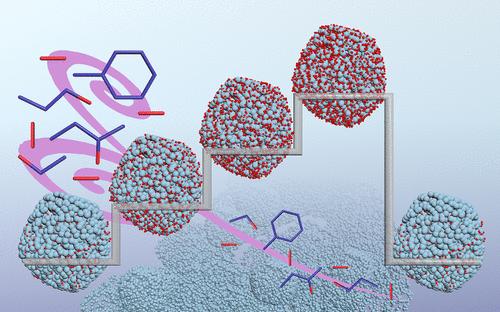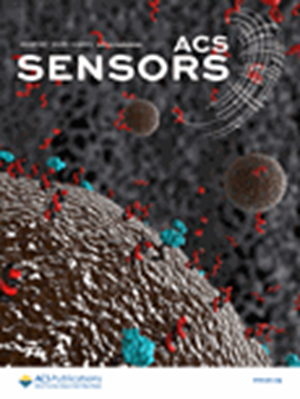Kinetic Modeling in Temperature-Modulated Semiconductor Gas Sensor Utilizing Eley–Rideal Mechanism and Its Application in Discriminative Detection of VOCs
IF 8.2
1区 化学
Q1 CHEMISTRY, ANALYTICAL
引用次数: 0
Abstract
This study presents a comprehensive kinetic investigation for describing the dynamic sensing process of semiconductor metal oxide (SMO)-based gas sensors, with a focus on the Eley–Rideal mechanism as a valid pathway. The modeling elucidates the direct interactions between volatile organic compounds (VOCs) and adsorbed oxygen on the material surface, providing insights into the temperature-dependent response characteristics of the sensor and addressing selectivity toward different VOCs fundamentally. By incorporating the effects of thermal modulation, the kinetic model was validated through theoretical fitting of experimental data obtained from a fabricated SnO2 nanoparticle gas sensor exposed to ethanol, n-propanol, toluene, and butanone at systematically varying operating temperatures. The results demonstrated that the model accurately captures response transient values, enabling a general framework for qualitatively discriminating specific gases based on their unique reaction kinetics. Furthermore, a machine learning procedure containing the above model and power laws of quantitative concentrations after identifying compounds was developed for the prediction of target VOCs. The qualitative accuracy was determined to be 99.4%, while quantifying with the mean absolute errors of 5.0, 7.5, 4.0, and 8.9 within the range of 25–200 ppm, respectively. The precise and straightforward strategy facilitates the response modeling of SMO-based gas sensors, offering a valuable platform for the designing model-driven algorithms applicable in gas analysis and monitoring.

利用电子滑动机制的温度调节型半导体气体传感器的动力学建模及其在挥发性有机化合物鉴别检测中的应用
本研究对基于半导体金属氧化物(SMO)的气体传感器的动态传感过程进行了全面的动力学研究,重点关注作为有效途径的埃利-里德尔机制。建模阐明了挥发性有机化合物 (VOC) 与材料表面吸附氧之间的直接相互作用,深入揭示了传感器随温度变化的响应特性,并从根本上解决了对不同 VOC 的选择性问题。通过结合热调制效应,该动力学模型通过理论拟合从暴露于乙醇、正丙醇、甲苯和丁酮的制备二氧化锡纳米粒子气体传感器上获得的实验数据进行了验证。结果表明,该模型能准确捕捉反应瞬态值,从而为根据特定气体的独特反应动力学对其进行定性鉴别提供了一个通用框架。此外,还开发了一种机器学习程序,其中包含上述模型和识别化合物后定量浓度的幂律,用于预测目标挥发性有机化合物。定性准确率为 99.4%,而定量在 25-200 ppm 范围内的平均绝对误差分别为 5.0、7.5、4.0 和 8.9。这种精确而直接的策略有助于基于 SMO 的气体传感器的响应建模,为设计适用于气体分析和监测的模型驱动算法提供了一个宝贵的平台。
本文章由计算机程序翻译,如有差异,请以英文原文为准。
求助全文
约1分钟内获得全文
求助全文
来源期刊

ACS Sensors
Chemical Engineering-Bioengineering
CiteScore
14.50
自引率
3.40%
发文量
372
期刊介绍:
ACS Sensors is a peer-reviewed research journal that focuses on the dissemination of new and original knowledge in the field of sensor science, particularly those that selectively sense chemical or biological species or processes. The journal covers a broad range of topics, including but not limited to biosensors, chemical sensors, gas sensors, intracellular sensors, single molecule sensors, cell chips, and microfluidic devices. It aims to publish articles that address conceptual advances in sensing technology applicable to various types of analytes or application papers that report on the use of existing sensing concepts in new ways or for new analytes.
文献相关原料
公司名称
产品信息
阿拉丁
stannous chloride dihydrate
阿拉丁
sodium hydroxide (NaOH)
 求助内容:
求助内容: 应助结果提醒方式:
应助结果提醒方式:


